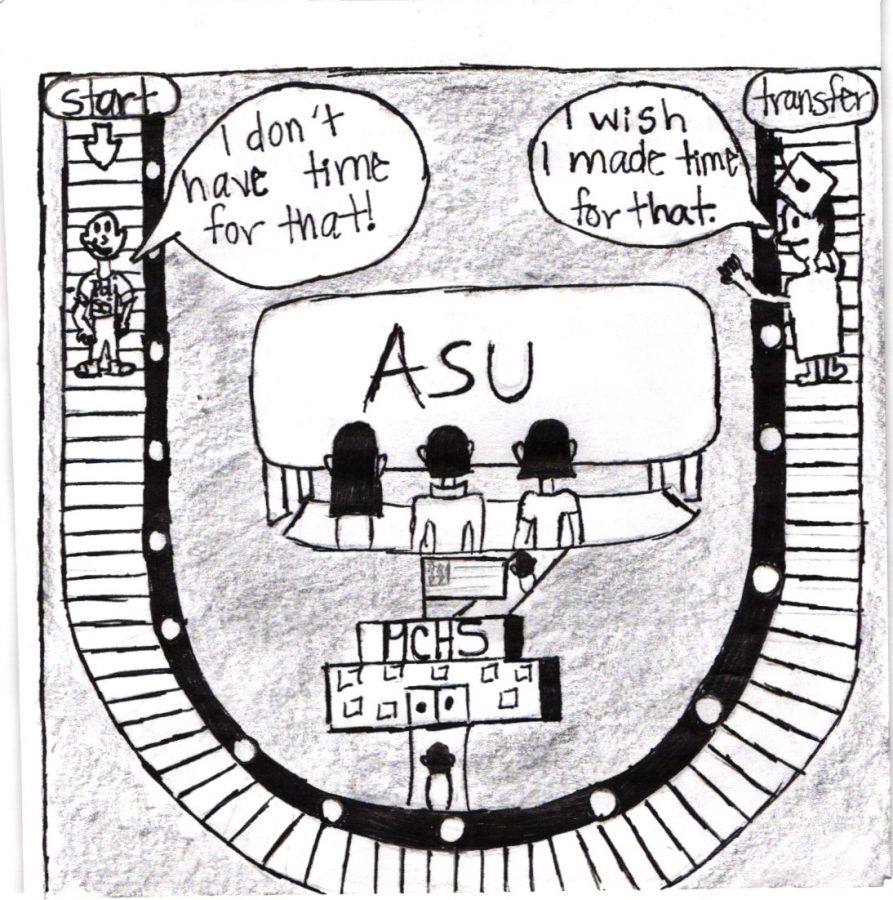In, out mindset mars learning
Associated Student Union membership lacks undergrads
Oct 30, 2017
As the cost of college tuition increases, community colleges are seen as a revolving door on the path to higher education.
With a lower per unit cost than four-year institutions, which average $8,855 per year minus room and board, many community and junior colleges are fast-tracking student access to education to combat the potential of incurring a lifetime of strangling debt.
At Contra Costa College, the average tuition is approximately $1,380 per year for in-state students and $9,000 for out-of-state students if they take 30 units per year.
Still, this rush to collect tuition fees in exchange for transfer status, robs a community college of what it truly could be.
Instead of offering itself as a hub for community involvement, many clubs and campus organizations remain sparsely populated, with community-organized events under-attended by students and staff.
Even the student government at CCC is dominated by Middle College High School students who have more time to participate because they literally have to be here longer every day, despite the six-year average adult students take to graduate or transfer.
The concept of California’s community colleges was brought to fruition in 1907 by the Legislature when attempting to increase learning opportunities for people who needed more than a high school education.
The reality is, at its core, the true intent of the modern community college campus is to lead students down a conveyor belt toward a predetermined academic outcome or in many cases — simply the exit.
“We are a two-year institution, which means students should be completing their degrees in two years. But for a lot of students that just doesn’t happen,” Academic Senate President Beth Goehring said.
Based on district research, it takes up to six years for a student to graduate from a community college because often times, while attending community college, students have other responsibilities like tending to a family or a job.
To remedy this, state and district administrators have limited class repeatability and are planning to institute guided pathways to streamline the student experience and offer an unimpeded path toward transfer or graduation.
The program may increase campus success rates, but what it gains in completion, it loses in community culture and campus participation.
This is clearly reflected by the minuscule number of non-high school students that hold ASU membership.
A college that only focuses on completion rates will create a student body that is less involved in campus activities.
The limiting of repeatable classes stunts opportunities to perfect a craft or skill and forces students who would normally be a part of the campus to find another outlet for their creativity.
Students who become master level musicians or sculptors do little to raise campus completion rates, but students not on a guided pathway may have more time to involve themselves with on-campus activities.
These students are also willing to pay for their tuition, but they are finding their money and their participation is no longer welcome here.


